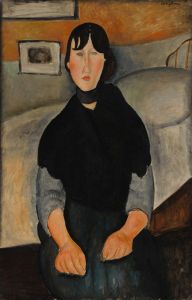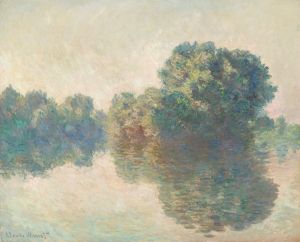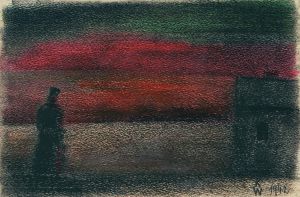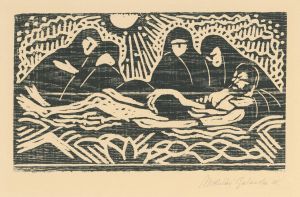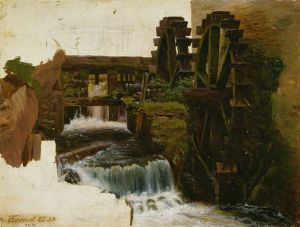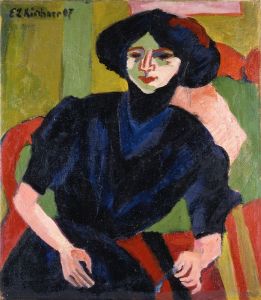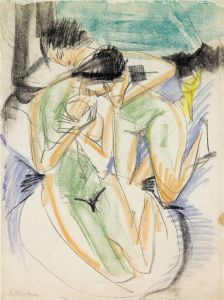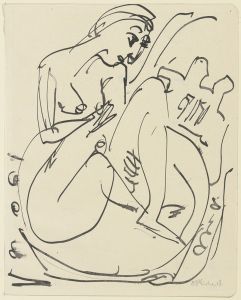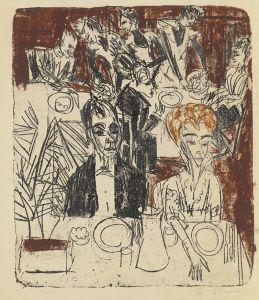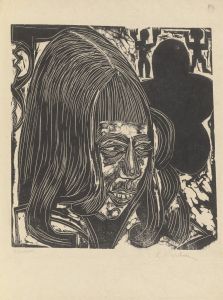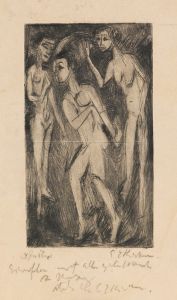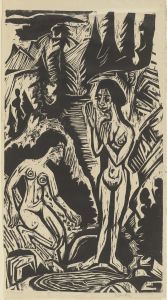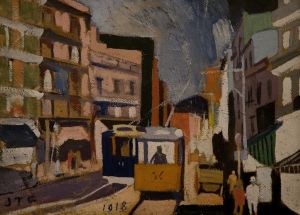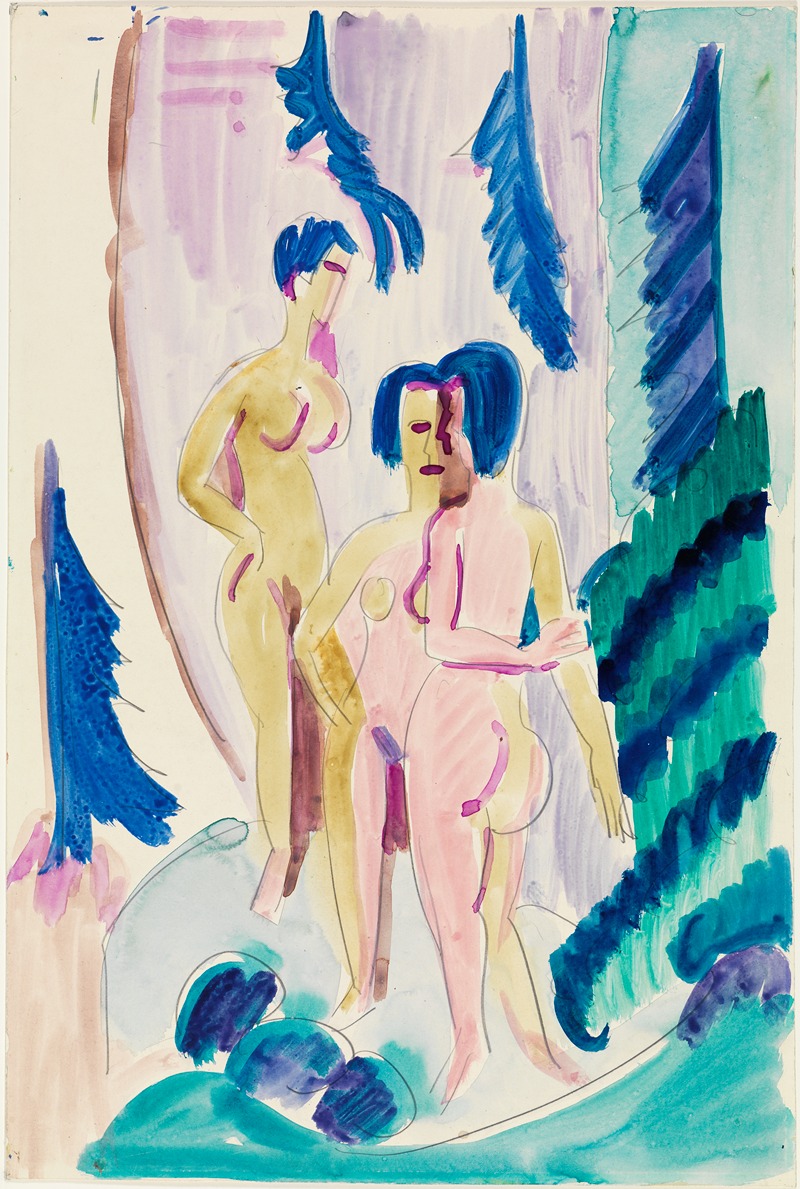
Drei Akte im Bergwald
A hand-painted replica of Ernst Ludwig Kirchner’s masterpiece Drei Akte im Bergwald, meticulously crafted by professional artists to capture the true essence of the original. Each piece is created with museum-quality canvas and rare mineral pigments, carefully painted by experienced artists with delicate brushstrokes and rich, layered colors to perfectly recreate the texture of the original artwork. Unlike machine-printed reproductions, this hand-painted version brings the painting to life, infused with the artist’s emotions and skill in every stroke. Whether for personal collection or home decoration, it instantly elevates the artistic atmosphere of any space.
"Drei Akte im Bergwald" (Three Nudes in the Forest) is a painting by the German expressionist artist Ernst Ludwig Kirchner. Created in 1910, this work is a significant example of Kirchner's exploration of the human form and his interest in the natural world, which are central themes in his oeuvre. Kirchner was a founding member of the influential German expressionist group Die Brücke (The Bridge), which sought to create a new artistic language that broke away from traditional academic standards and embraced more emotive and spontaneous forms of expression.
The painting depicts three nude female figures set against a backdrop of a dense, stylized forest. Kirchner's use of bold, non-naturalistic colors and dynamic brushstrokes is characteristic of the expressionist movement, which aimed to convey emotional experience rather than physical reality. The figures are rendered with elongated forms and simplified shapes, emphasizing their integration with the surrounding environment. This approach reflects Kirchner's interest in primitivism and his desire to return to a more natural and instinctual way of life, away from the constraints of modern society.
Kirchner's work during this period was heavily influenced by his experiences in the Moritzburg lakes near Dresden, where he and other members of Die Brücke would retreat to engage in plein air painting and immerse themselves in nature. These excursions were crucial in shaping Kirchner's artistic development, as they allowed him to experiment with new techniques and ideas outside the confines of urban life. The natural setting of "Drei Akte im Bergwald" can be seen as a reflection of these experiences, capturing the sense of freedom and liberation that Kirchner and his contemporaries sought in their art.
The painting also reflects Kirchner's fascination with the human body and its expressive potential. By placing the nude figures in a natural setting, Kirchner emphasizes their connection to the earth and the primal aspects of human existence. This theme is consistent with the broader goals of Die Brücke, which aimed to bridge the gap between the past and the present by drawing inspiration from non-Western art forms and pre-industrial cultures.
"Drei Akte im Bergwald" is housed in the collection of the Brücke Museum in Berlin, which is dedicated to the works of the Die Brücke artists. The museum holds an extensive collection of Kirchner's works, providing valuable insight into his artistic evolution and the broader context of German expressionism. Kirchner's contributions to the movement have been widely recognized, and his works continue to be celebrated for their innovative approach to form, color, and subject matter.
Overall, "Drei Akte im Bergwald" exemplifies Kirchner's unique vision and his commitment to exploring new artistic possibilities. Through its vibrant colors, dynamic composition, and evocative subject matter, the painting captures the essence of expressionism and its enduring impact on the development of modern art.





